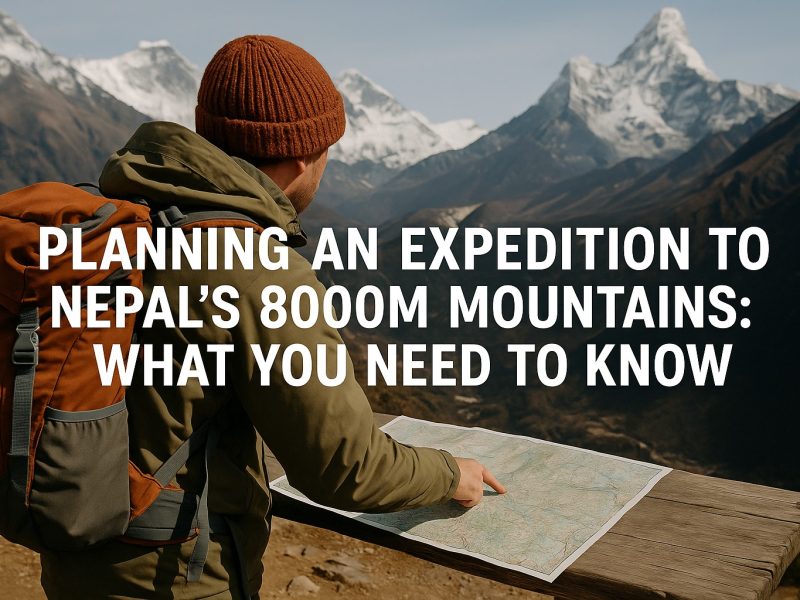
Nepal is home to 8 of the 14 highest mountains in the world, each standing above 8,000 meters. These include the mighty Mount Everest (8,848.86m), Lhotse (8,516m), Makalu (8,481m), Cho Oyu (8,188m), Dhaulagiri (8,167m), Manaslu (8,163m), Annapurna I (8,091m), and Kanchenjunga (8,586m) (which lies partly in India, but its main approach is from Nepal). These towering giants are not just mountains—they are legends. For climbers, standing on the summit of any of Nepal’s 8000m peaks is the ultimate dream and a lifelong goal. These peaks represent raw adventure, unmatched challenge, and the closest thing to touching the sky.
Climbing an 8000-meter mountain in Nepal is not just about reaching the summit. It’s about testing your mental strength, physical endurance, and ability to adapt in extreme conditions. At such altitudes—known as the Death Zone—the human body begins to slowly shut down. This is why preparation is everything. Climbers need months, if not years, of training, high-altitude experience, and proper acclimatization. The weather is unpredictable, the terrain is harsh, and the risks are very real. But with the right mindset and a well-planned expedition, the journey can be incredibly rewarding.
These high Himalayan expeditions require more than just climbing skills. You need strong logistics support, a trusted local trekking company, experienced Sherpa guides, and the right climbing gear. Climbing Everest or any other 8000m peak in Nepal is a big commitment—it takes time, money, and mental toughness. But when done with proper guidance and preparation, it becomes one of the most life-changing experiences you’ll ever have.
Whether you’re aiming for Everest Expedition, Annapurna Expedition, or looking to scale Manaslu or Dhaulagiri, every peak offers something unique—stunning views, spiritual connection, and a deep sense of achievement. Climbing Nepal’s 8000m peaks is more than a sport—it’s a personal journey to the top of the world. At Nature Heaven Treks and Expedition, we’re here to help you plan this dream safely and successfully.
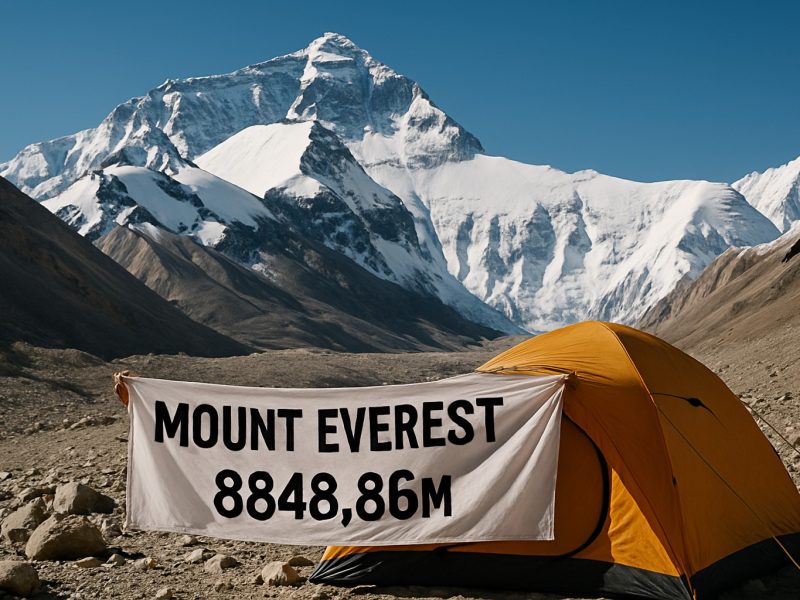
Mount Everest, standing at a height of 8,848.86 meters (29,031.7 feet), is the highest mountain in the world. It is located in the Khumbu region of Nepal, right along the border with Tibet (China). Locally, it is known as Sagarmatha in Nepali and Chomolungma in Tibetan. This majestic peak lies in the heart of the Himalayas, inside the Sagarmatha National Park, a UNESCO World Heritage Site. Mount Everest attracts thousands of climbers and trekkers each year who dream of reaching its summit or simply trekking to Everest Base Camp (5,364m) for a closer view.
The first successful ascent of Mount Everest was made on May 29, 1953, by Sir Edmund Hillary of New Zealand and Tenzing Norgay Sherpa of Nepal. This historic achievement opened a new chapter in mountaineering history. Today, Everest remains a dream destination for mountaineers, adventurers, and trekking enthusiasts from around the world. Climbing Everest is a life-changing expedition, requiring physical strength, mental toughness, and experienced guides. Whether you’re planning to climb Everest or just want to enjoy the incredible views on an Everest Base Camp Trek, this iconic mountain offers an unforgettable Himalayan experience.
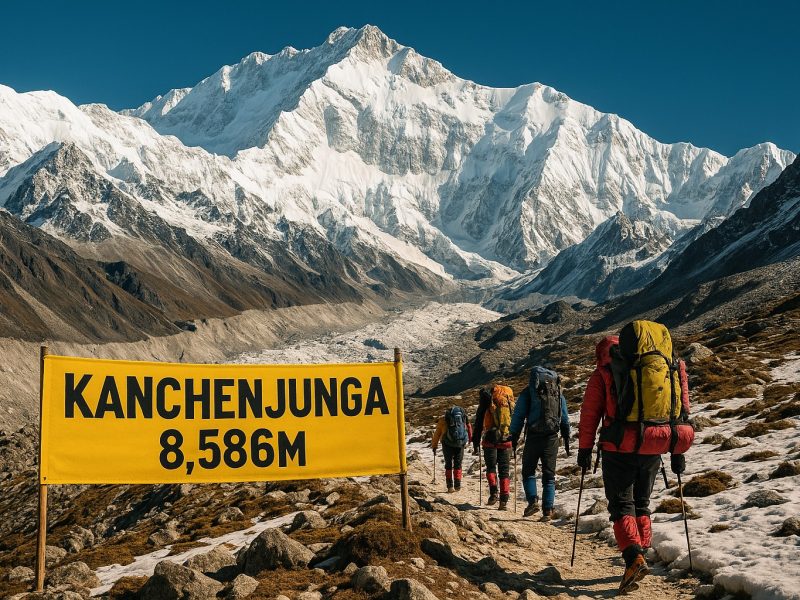
Kanchenjunga is the third-highest mountain in the world, standing tall at 8,586 meters (28,169 feet). It is located in the far eastern region of Nepal, bordering the Indian state of Sikkim. This massive Himalayan giant is part of the Kanchenjunga Conservation Area, known for its untouched beauty and remote trekking routes. The mountain is sacred to the local people and is surrounded by deep valleys, forests, and glaciers. Unlike Everest or Annapurna, the trails here are much quieter, offering a peaceful adventure close to nature and culture.
The first successful ascent of Kanchenjunga was made on May 25, 1955, by Joe Brown and George Band, part of a British expedition. Interestingly, they stopped just a few feet below the summit out of respect for the beliefs of the local people, who consider the top of Kanchenjunga sacred. This tradition is still followed today. For climbers and trekkers, Kanchenjunga offers both a challenging mountaineering experience and remote trekking routes, such as the Kanchenjunga Base Camp Trek. It’s a perfect choice for those looking for off-the-beaten-path Himalayan adventures in Nepal’s eastern mountains.
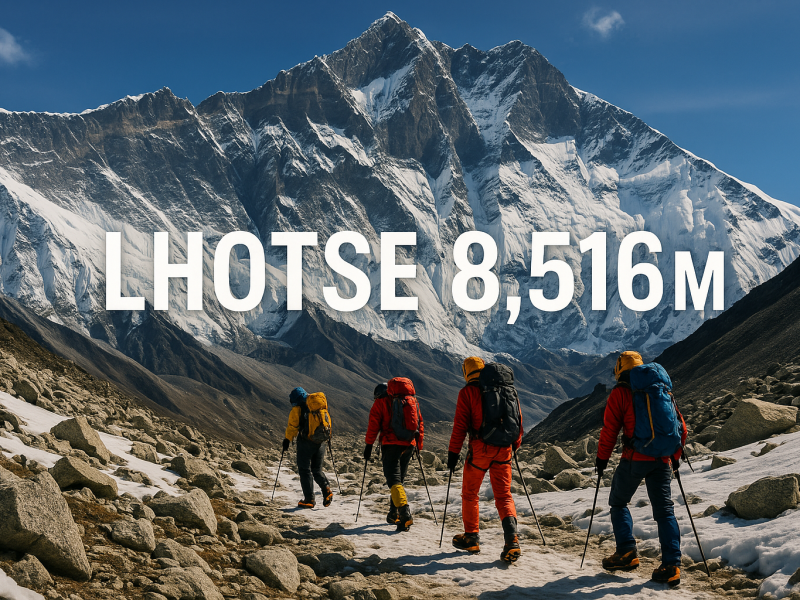
Lhotse, standing tall at 8,516 meters (27,940 feet), is the fourth-highest mountain in the world. It is located in the Khumbu region of Nepal, very close to Mount Everest. In fact, it shares the same climbing route as Everest up to Camp 3 before branching off toward its own summit. The name “Lhotse” means “South Peak” in Tibetan. This majestic Himalayan giant lies along the border of Nepal and Tibet and is part of the Mahalangur Himal range. Its towering presence and dramatic ridges make it a breathtaking sight for anyone trekking to Everest Base Camp or climbing in the region.
Lhotse was first successfully climbed on May 18, 1956, by a Swiss team—Fritz Luchsinger and Ernst Reiss—during a Swiss expedition. While not as well-known as Everest, Lhotse is a dream peak for experienced climbers looking for high-altitude adventure. The most popular route is the Lhotse Face, a steep icy wall that also forms part of the Everest South Col route. Due to its extreme altitude, climbers must be well-acclimatized and physically fit. Keywords: Lhotse expedition, Lhotse climbing history, fourth highest mountain, Lhotse Face, climbing Lhotse Nepal, Khumbu Himalaya.
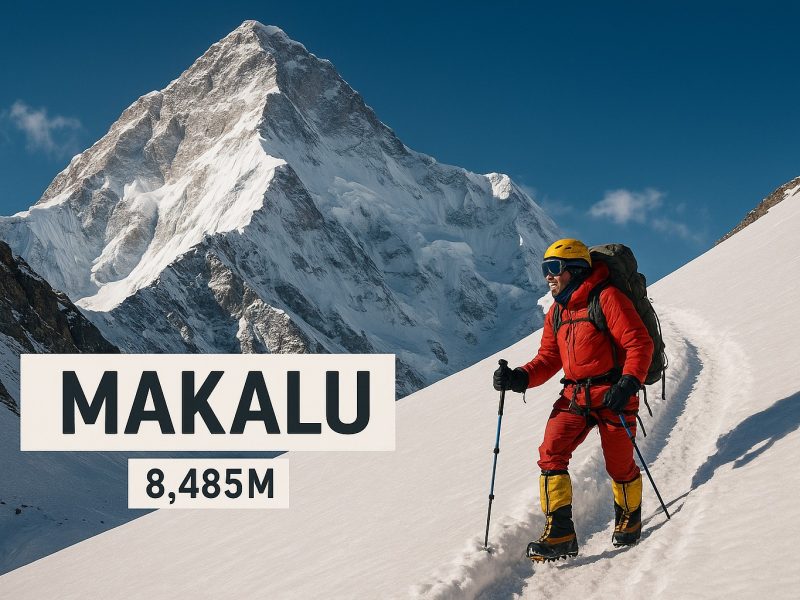
Makalu is the fifth highest mountain in the world, standing tall at 8,485 meters (27,838 feet). It is located in the eastern part of Nepal, in the Makalu-Barun National Park, close to the border with Tibet. This stunning peak lies just 19 kilometers southeast of Mount Everest. Makalu is famous for its pyramid-like shape and steep, sharp ridges. Because of its remote location and technical climbing routes, it is considered one of the more difficult 8,000-meter peaks to climb. The first successful ascent of Makalu was made on May 15, 1955 by Lionel Terray and Jean Couzy from a French expedition team.
Makalu offers breathtaking views and is surrounded by other beautiful mountains like Baruntse and Chamlang. It is a dream destination for serious climbers looking for a challenging and less-crowded Himalayan expedition. The area around Makalu is rich in biodiversity, with beautiful forests, rare wildlife, and traditional Sherpa villages. For those planning high-altitude climbing in Nepal, Makalu is a great option for an adventurous and rewarding mountaineering experience. Keywords: Makalu 8485m, Makalu region Nepal, first ascent Makalu, climbing Makalu peak, 8000m mountains in Nepal.
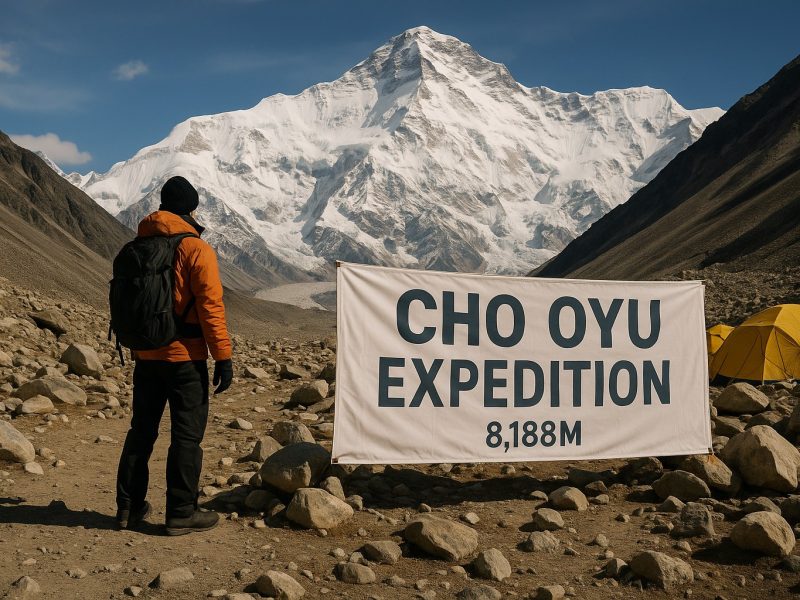
Cho Oyu stands tall at 8,188 meters (26,864 feet), making it the sixth-highest mountain on Earth. It is located in the Mahalangur Himal section of the Himalayas, right on the Nepal–Tibet (China) border, just west of Mount Everest. The mountain lies in the beautiful Khumbu region of Nepal, near Nangpa La Pass, a traditional trade route between Nepal and Tibet. Its name, “Cho Oyu,” means “Turquoise Goddess” in Tibetan, referring to the shimmering colors of the mountain seen at sunset. Because of its relatively gentle slopes and straightforward climbing route compared to other 8000-meter peaks, Cho Oyu is often considered one of the easiest 8000m mountains to climb and is a popular choice for climbers looking to experience high-altitude expeditions.
The first successful ascent of Cho Oyu was made on October 19, 1954, by an Austrian expedition team. The summit team included Herbert Tichy, Joseph Jöchler, and Pasang Dawa Lama, a legendary Sherpa climber. Today, Cho Oyu is a common goal for mountaineers preparing for Everest or other big climbs. It offers an excellent introduction to Himalayan expedition climbing while still presenting the real challenges of high altitude, extreme cold, and changing weather. Whether you’re planning a serious mountaineering trip or learning about the 8000m peaks of Nepal, Cho Oyu remains a significant part of Nepal’s mountaineering heritage.
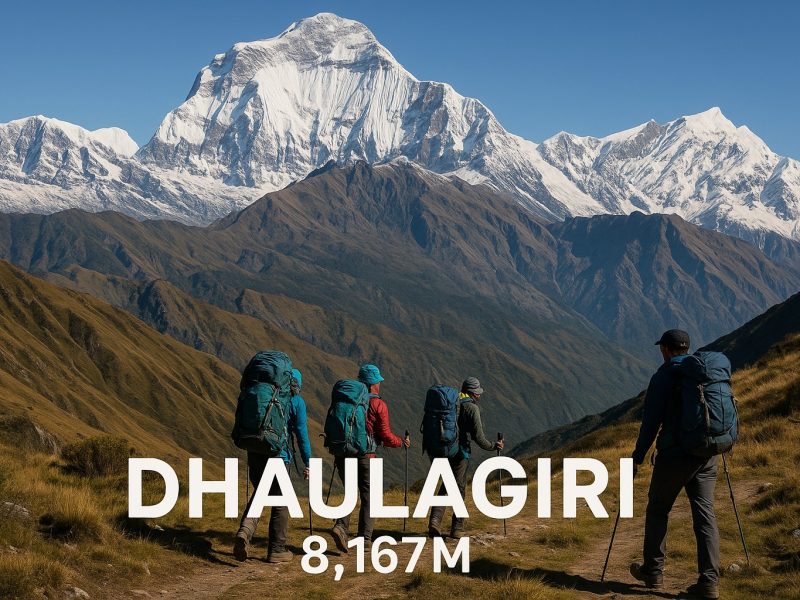
Dhaulagiri is the seventh highest mountain in the world, standing tall at 8,167 meters (26,795 feet) above sea level. It is located in the Dhaulagiri region of western Nepal, just northwest of Pokhara and near the famous Annapurna region. The name “Dhaulagiri” comes from Sanskrit, meaning “White Mountain,” and it truly lives up to its name with its massive snow-covered slopes and shining glacier walls. Dhaulagiri is known for its steep faces and remote trails, making it a stunning but challenging peak to explore or view during treks like the Dhaulagiri Circuit Trek.
Dhaulagiri was first climbed on May 13, 1960, by a Swiss-Austrian-Nepali team. This historic ascent was a major achievement in mountaineering history because, at that time, it was considered one of the hardest 8000-meter peaks to conquer due to its isolation, unpredictable weather, and technical climbing routes. Today, it is still a dream for many experienced climbers. Trekkers can also admire this beautiful mountain while doing treks around Hidden Valley, French Pass, and Dhampus Pass. Dhaulagiri remains one of Nepal’s most dramatic and powerful mountains — perfect for those seeking adventure, raw beauty, and a deeper Himalayan experience.
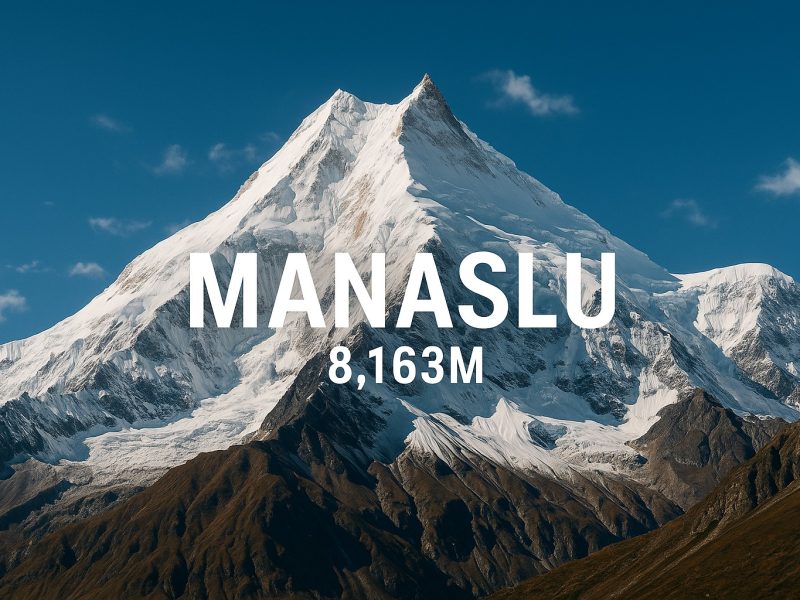
Manaslu is the eighth-highest mountain in the world, standing proudly at 8,163 meters (26,781 feet). It is located in the Gorkha region of Nepal, in the west-central part of the country. The name “Manaslu” comes from the Sanskrit word Manasa, meaning “soul” or “spirit.” That’s why it is often called the “Mountain of the Spirit.” This beautiful peak is surrounded by peaceful villages, lush forests, and deep valleys, making the Manaslu Circuit Trek one of the most scenic and less crowded treks in Nepal.
The first successful ascent of Mount Manaslu was made on May 9, 1956, by Toshio Imanishi from Japan and Gyalzen Norbu Sherpa of Nepal. Since then, it has become a dream destination for mountaineers who want to climb an 8,000-meter peak with a bit less traffic than Everest. Climbing Manaslu is still a big challenge due to its high altitude and harsh weather, but it’s also considered a great training peak for Everest. Trekkers and climbers love this region for its raw beauty, authentic culture, and unforgettable views of the Himalayan giants. Whether you’re trekking the circuit or aiming for the summit, Manaslu offers an adventure full of nature, peace, and spirit.
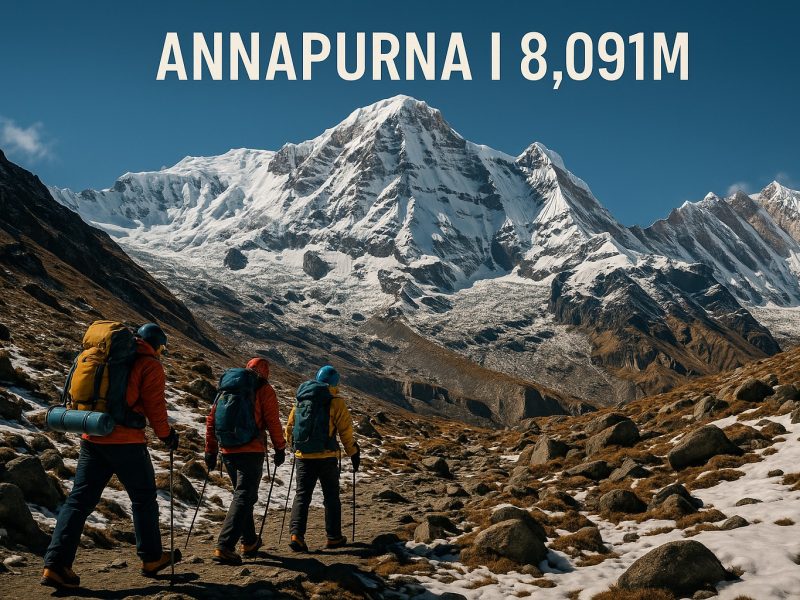
Annapurna I (8,091 meters) is the 10th highest mountain in the world and the tallest peak in the Annapurna range of Nepal. Located in the north-central region of the country, it lies in the beautiful Annapurna Conservation Area of the Gandaki Province. The mountain is famous for its stunning views, deep valleys, and challenging terrain. Annapurna I is known to be one of the most dangerous 8,000-meter peaks to climb due to its steep slopes and avalanche risks, making it a true challenge for climbers. Despite the risk, many mountaineers are drawn to its beauty and the prestige of reaching the summit.
The first successful ascent of Annapurna I was made on June 3, 1950, by a French team led by Maurice Herzog and Louis Lachenal. This was also the first 8,000-meter peak ever climbed, making it a historic moment in mountaineering. Annapurna I continues to attract trekkers and climbers from around the world, especially those doing the Annapurna Circuit Trek or the Annapurna Base Camp Trek. Whether you’re a trekking enthusiast or a serious climber, Annapurna I holds a special place in the heart of Himalayan adventure.
When planning to climb an 8000-meter mountain in Nepal, it’s very important to choose the right peak that matches your fitness, climbing experience, and comfort with high altitude. Not all 8000m peaks are the same—some are safer, easier, and more suitable for beginners. For first-time 8000m climbers, Manaslu (8,163m) and Cho Oyu (8,188m) are considered the best choices. These mountains have higher success rates, fewer technical sections, and are generally less dangerous compared to peaks like Annapurna I or K2. Climbing Mount Manaslu, for example, offers a great way to experience the “death zone” above 8000m without facing extreme difficulty.
Before choosing a peak, think about your altitude tolerance, technical climbing skills, and previous high-altitude experience. If you’ve already climbed 6000m or 7000m peaks like Island Peak or Mera Peak, that’s a great start. Ask yourself: Can I use crampons and an ice axe? Do I handle altitude sickness well? Have I done long expeditions before? Popular 8000m expeditions in Nepal like Manaslu Expedition and Cho Oyu Expedition attract climbers who want to gradually build their skills. Remember, success and safety depend on proper training, good planning, and going with a trusted local company like Nature Heaven Treks and Expedition, which offers full support for your first 8000m climb.
The best time for climbing 8000-meter peaks in Nepal is during the spring season (April to May). This is the most popular time because the weather is generally more stable, with clear skies and low chances of snowfall. Warm daytime temperatures and calmer winds make it safer and more comfortable to climb. Popular peaks like Mount Everest, Lhotse, Kangchenjunga, and Makalu see the most attempts during this time. The jet stream shifts away from the Himalayas in late April, giving climbers a small “weather window” in May to make their summit push. Many expedition teams plan their climbs around this window because it offers the best chance for success and safety.
Autumn (September to October) is another good time for high-altitude expeditions, but it’s less popular than spring. After the monsoon ends, the skies clear, and visibility improves dramatically. The trails are quieter, and base camps are less crowded. However, temperatures drop quickly at higher elevations, and snow conditions can be more unpredictable. Peaks like Manaslu, Dhaulagiri, and Cho Oyu are often attempted in early autumn when the weather is still relatively calm. Choosing the right season depends on the mountain, weather patterns, and your climbing experience. For a safe and successful 8000m expedition in Nepal, always plan around these key weather seasons with a trusted team like Nature Heaven Treks and Expedition.
Climbing an 8000-meter mountain is one of the toughest challenges in the world, so your body and mind must be ready. You need a very high level of physical fitness. This includes strong cardio fitness (running, hiking with a backpack, cycling), muscle strength (especially in the legs and core), and good endurance for long, tough days. It’s also helpful to train at high altitudes if possible or use tools like an altitude mask to get your body used to low oxygen. Practice hiking for several days in a row with a heavy backpack. This will help prepare you for the physical stress of an expedition. Doing prior climbs between 6000 to 7000 meters is highly recommended to understand how your body reacts to high altitude and how to pace yourself.
Mental strength is just as important. You must be ready to face harsh weather, tough decisions, and possible delays. There will be moments of pain, doubt, and exhaustion—but staying calm and making smart choices can save your life. Learn how to handle pressure, fear, and fatigue. Meditation, breathing exercises, and visualizing success can help you stay focused. Experience with previous high-altitude climbs helps build this mental resilience, so you’re not shocked when things get hard. In the end, climbing an 8000m peak is not just about strength—it’s about patience, decision-making, and the will to keep going safely.
Before climbing any trekking peak or expedition mountain in Nepal, you must get special climbing permits. These permits are issued by the Nepal Mountaineering Association (NMA) or the Department of Tourism, depending on the height and category of the mountain. Each peak has its own permit fee, and for some 8000m peaks, there’s also a refundable garbage deposit. For major expeditions, the government assigns a liaison officer to monitor safety and rules. Your trekking agency, like Nature Heaven Treks and Expedition, will handle these official procedures on your behalf. For many peaks, you’ll also need a TIMS card and National Park or Conservation Area entry permits, depending on where the mountain is located.
One more important thing: insurance is a must. All climbers and staff must have travel insurance that covers high-altitude emergency evacuation by helicopter, medical treatment, and trip cancellation. Without proper insurance, rescue flights can cost thousands of dollars and are not possible in emergencies. Make sure your insurance mentions “trekking and mountaineering in Nepal” and covers up to the maximum altitude of your climb. Always double-check before buying. Having the right permits and insurance not only keeps you safe but also ensures you follow Nepal’s mountaineering regulations.
Climbing an 8,000-meter peak in Nepal is a big adventure, and it also comes with a wide range of costs. The price usually starts from around $11,000 and can go up to $60,000 or more, depending on the mountain you choose, the season, and the services you need. Some peaks like Cho Oyu or Manaslu may be on the lower end, while Everest or Lhotse with full support services can be much more expensive. These costs often include climbing permits, experienced guides, Sherpa support, porters, oxygen cylinders, high-altitude gear transport, meals at base camp, and tents. With a trusted company like Nature Heaven Treks and Expedition, you get full support with safety, logistics, and experienced staff to guide you every step of the way.
However, there are also some additional costs you should plan for. These may include your international flight tickets, personal climbing gear, travel and rescue insurance, and tips for your guides and porters at the end of the expedition. Some climbers also pay extra for helicopter services, satellite communication, or private high-altitude Sherpas. It’s important to check what is included in your package to avoid surprises. Choosing a reliable expedition operator will help you focus on your summit dream, while they handle the complex logistics and ensure your safety throughout the journey.
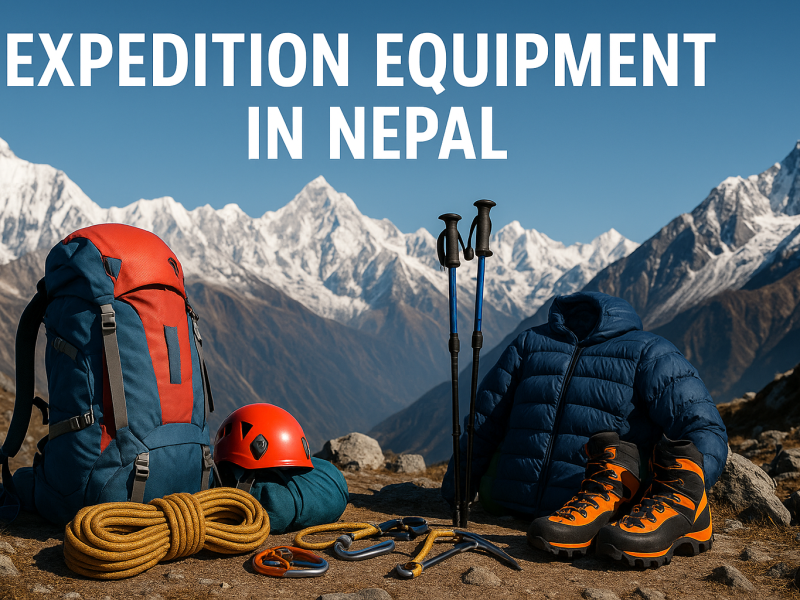
When you’re climbing an 8000-meter mountain in Nepal, having the right equipment can save your life. You need proper high-altitude climbing gear like a down suit (extreme cold clothing), insulated boots, crampons (metal spikes for your boots), ice axe, helmet, harness, gloves, goggles, and a sleeping bag rated for -30°C or colder. Other important items include a headlamp, trekking poles, thermal layers, and waterproof outerwear. Some gear—like tents, cooking stoves, and ropes—is often shared as group equipment, while personal gear like boots, clothing, and backpack must be your own and properly fitted. Your expedition company, like Nature Heaven Treks and Expedition, usually helps with organizing group gear and logistics, so you can focus on your climb.
At such extreme heights, supplemental oxygen is often required—especially above 7000m, and almost always above 8000m. Most climbers use oxygen from Camp 3 or 4 to the summit and back. You’ll usually carry 2–3 bottles (cylinders) per person. Each bottle weighs around 3–4 kg and provides oxygen for several hours depending on flow rate (usually 2–4 liters per minute). You’ll also need an oxygen mask and regulator system. The cost of oxygen equipment can range from $500 to $800 per bottle, and it’s a major part of the total expedition cost. Using oxygen not only improves your safety but also increases your chances of reaching the summit safely.
Climbing in the high Himalayas, especially above 6,000 or 8,000 meters, comes with serious risks. The most common problems include Acute Mountain Sickness (AMS), which can cause headaches, nausea, and dizziness due to low oxygen at high altitudes. Frostbite is also a danger in freezing temperatures, especially for fingers, toes, and the nose. Other risks include avalanches, falling into hidden crevasses, and weather delays caused by snowstorms or strong winds. These challenges can suddenly appear and make the journey more difficult or even life-threatening.
To reduce these risks, proper acclimatization is very important. This means spending extra days at certain altitudes so your body can adjust to lower oxygen levels. Climbers should always follow the “climb high, sleep low” rule, take regular rest days, and go slowly. Having experienced Sherpas with you is also very helpful. They understand the mountains, can help set up camps, carry loads, and guide you safely. A good expedition team must also have emergency plans, such as oxygen support, satellite phones, and helicopter rescue options in case something goes wrong. When safety comes first, the climb becomes much more enjoyable and successful.
Climbing an 8000-meter mountain is not just a goal—it’s a life-changing adventure. It takes courage, preparation, and the right team. Whether you dream of reaching the summit of Everest, Manaslu, or any other giant in Nepal, you need more than just strength—you need proper planning and expert support. These expeditions are not easy. They are challenging, high-risk, and require full commitment. But with the right guidance, they become one of the most rewarding experiences of your life.
Choosing the Right Expedition Company
When planning your 8000-meter expedition, choosing a trusted company is very important. Always look for a government-licensed trekking and expedition agency. Check their experience, success rates, and real client reviews. Many companies offer packages, but not all are reliable. Local Nepali companies like Nature Heaven Treks and Expedition bring unmatched local knowledge, experienced Sherpa support, and personalized logistics. Unlike international operators, local teams offer more flexibility, better understanding of the terrain, and direct communication during your entire journey.
Why Nature Heaven Treks and Expedition
Nature Heaven Treks and Expedition, your safety and success are our top priorities. We handle everything—permits, base camp logistics, trained Sherpas, oxygen supplies, and emergency support. We offer custom plans based on your goals, fitness, and timeline. Whether you’re aiming for Everest, Dhaulagiri, or Annapurna, our expert team is here to support you every step of the way. These expeditions are not just climbs—they are personal journeys to discover your true strength.
✅ Let Nature Heaven Treks and Expedition guide your 8000-meter journey—safe, supported, and unforgettable.
📞 WhatsApp: +977-9851218358
🌐 Website: https://natureheaventrek.com/
@Copyright 2025 Nature Heaven Treks and Expedition, Kathmandu, Nepal. All Rights Reserved.
Chat with Us